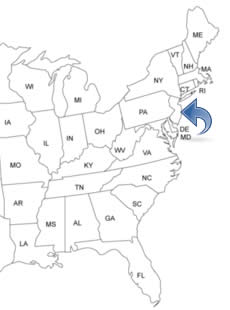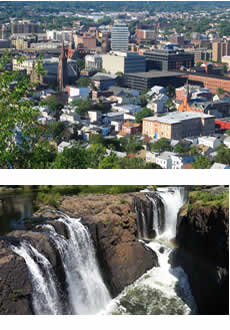NEW JERSEY PEOPLE SEARCH!
- ✔ Contact Info
- ✔ Phone Numbers
- ✔ Criminal Records
- ✔ Income Info
- ✔ Neighbors
- ✔ People's Age
- ✔ Property Ownership
- ✔ And Much More
Paterson, New Jersey
Paterson is located in the north-eastern part and is the third largest city in the U.S. State of New Jersey. The Silk City. The Great Falls Historic District is the most famous neighborhood in Paterson. The City of Paterson was once one of the mightiest industrial cities of the United States. It was the first planned industrial city in the USA and it has some of the country's oldest textile mills.
To See And To Do In Paterson
- The Paterson Museum
- The Great Falls of the Passaic River
- The Great Falls Historic District
- Great Falls State Park
- The Lambert Castle
- Willow Springs Country Club And Golf Course
History Of Paterson - Timeline
In 1666, hunters and land prospectors from the colony Newark traveled up the river and explored the area where Paterson today is. In 1679, The Great Falls in Paterson were for the first time mentioned in a land purchase. Around the year 1700, knowledge of the falls had become widespread, and it began to attract visitors. In 1775, the Godwin House, or Passaic Hotel, was established near the falls.
In 1778, Alexander Hamilton visited the falls and in 1791, Paterson was founded with help from Alexander Hamilton and the Society for Establishing Useful Manufactures (S.U.M.). It was a private state-sponsored corporation. The company's management of the Great Falls of the Passaic River as a power-source for grist mills resulted in the growth of Paterson as one of the first industrial centers in the United States. In 1793, the first water-powered cotton spinning mill was built.
In 1815, a fire department was established. In 1835, Samuel Colt firearms began its production in Paterson. In 1837, the first locomotive was built in Paterson by the Rogers Locomotive and Machine Works. In 1839, Peter Archdeacon purchased land at the Great Falls and settled there with his wife and three children. He practiced the shoemaker’s trade, entered into the milk business, and built handlooms.
In 1841, silk manufacture came to Paterson. Silk textile workers were hired by Goerge A. Murray to staff a small factory in the attic of the Gun Mill. In 1855, there were 600 people were working in silk. In 1851, Paterson was incorporated as a city. In 1866, John Holland designed and built the first submarine boat.
In 1885, the silk industry employed 25,000 people in Paterson. In 1892, the Lambert Castle was built and was originally home to wealthy silk manufacturer Catholina Lambert. In 1896, the City Hall was built. In 1902, a fire destroyed much of the town. In 1913, more than 20,000 silk workers joined in a strike for five months and the mills stood silent. In 1947, Larry Doby became the second African American to play Major League Baseball.

